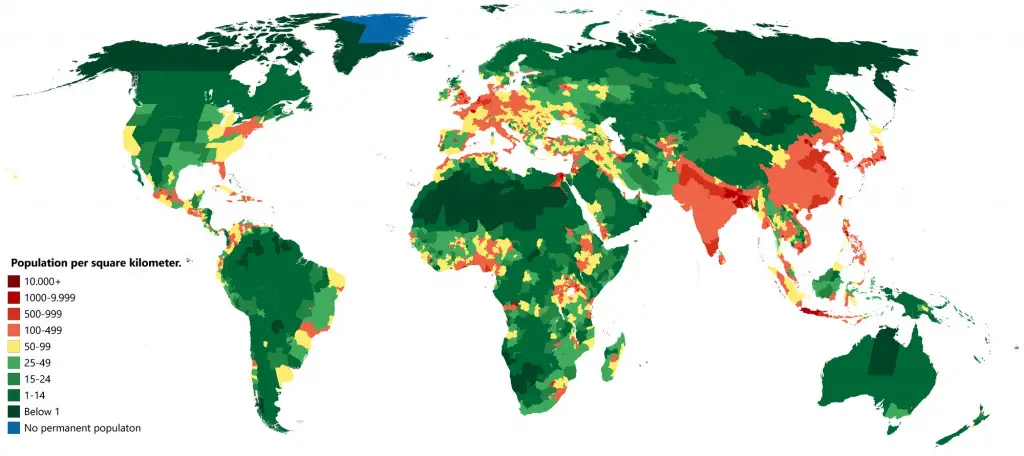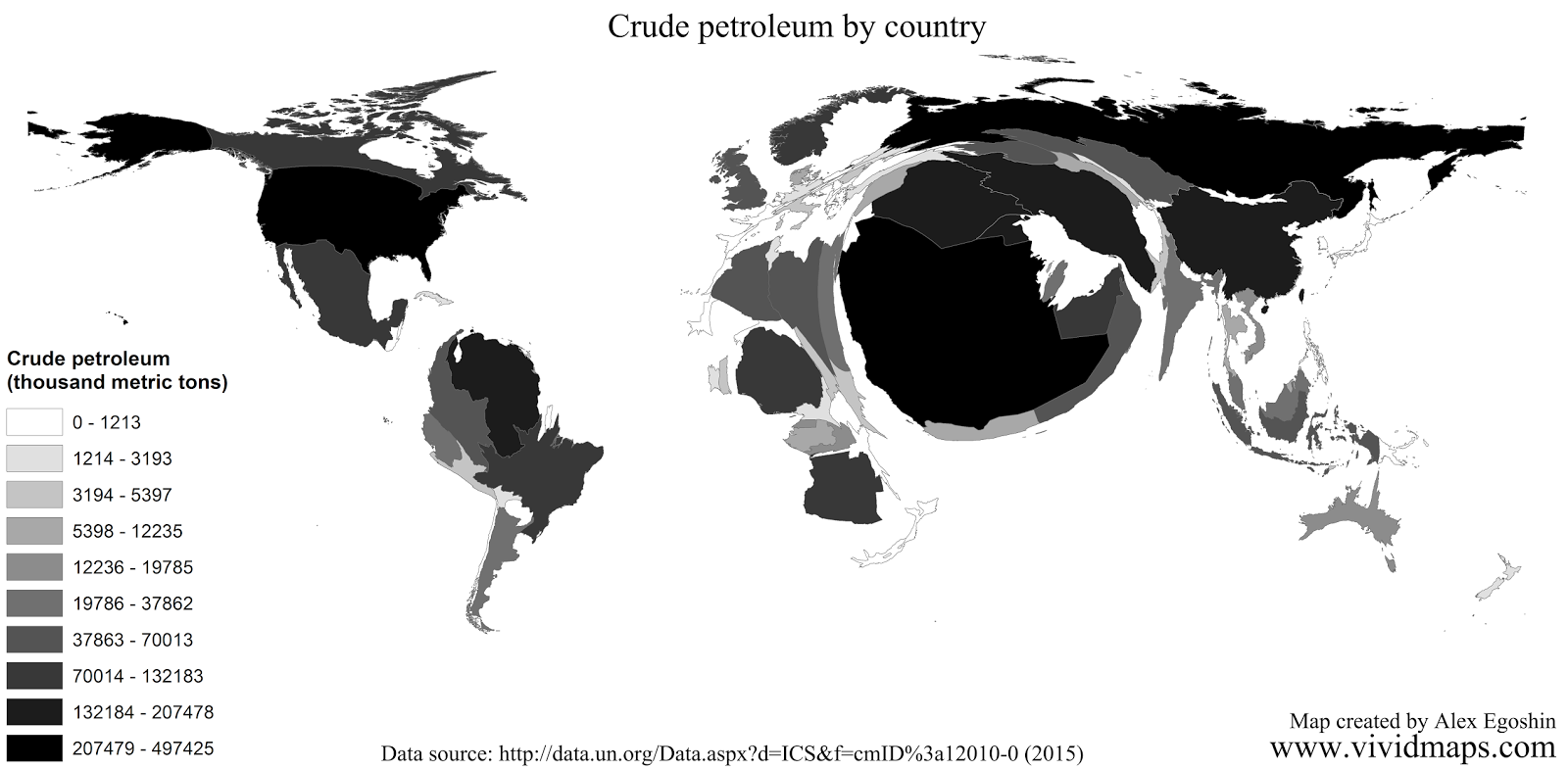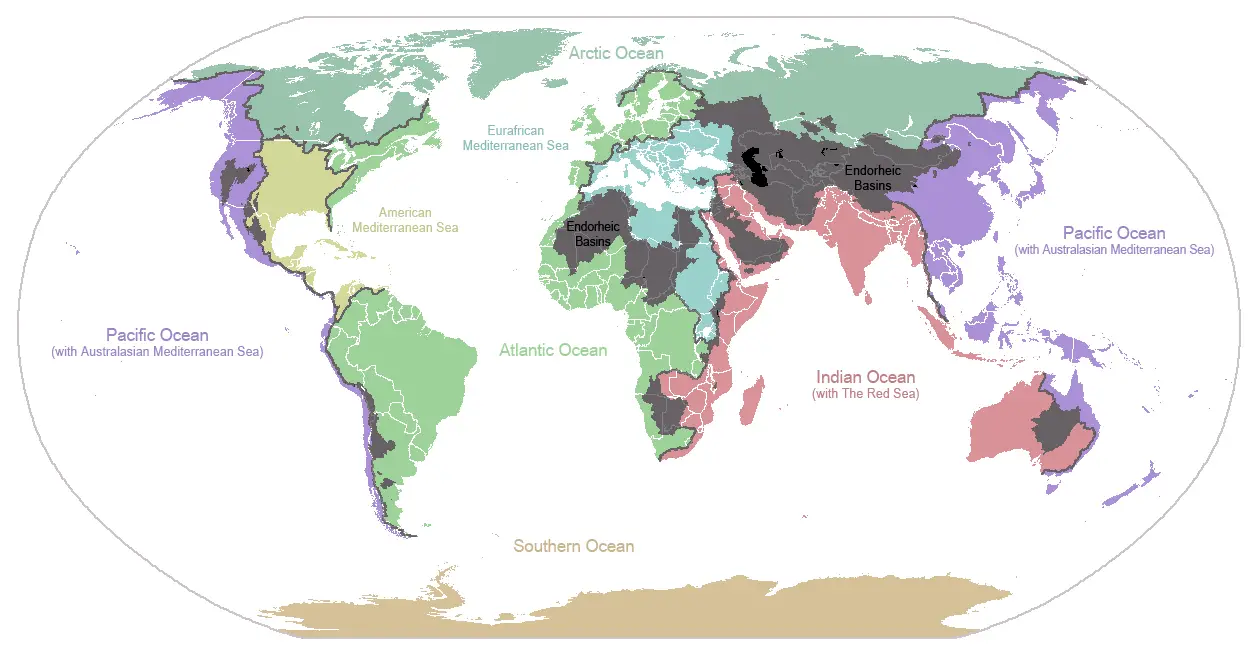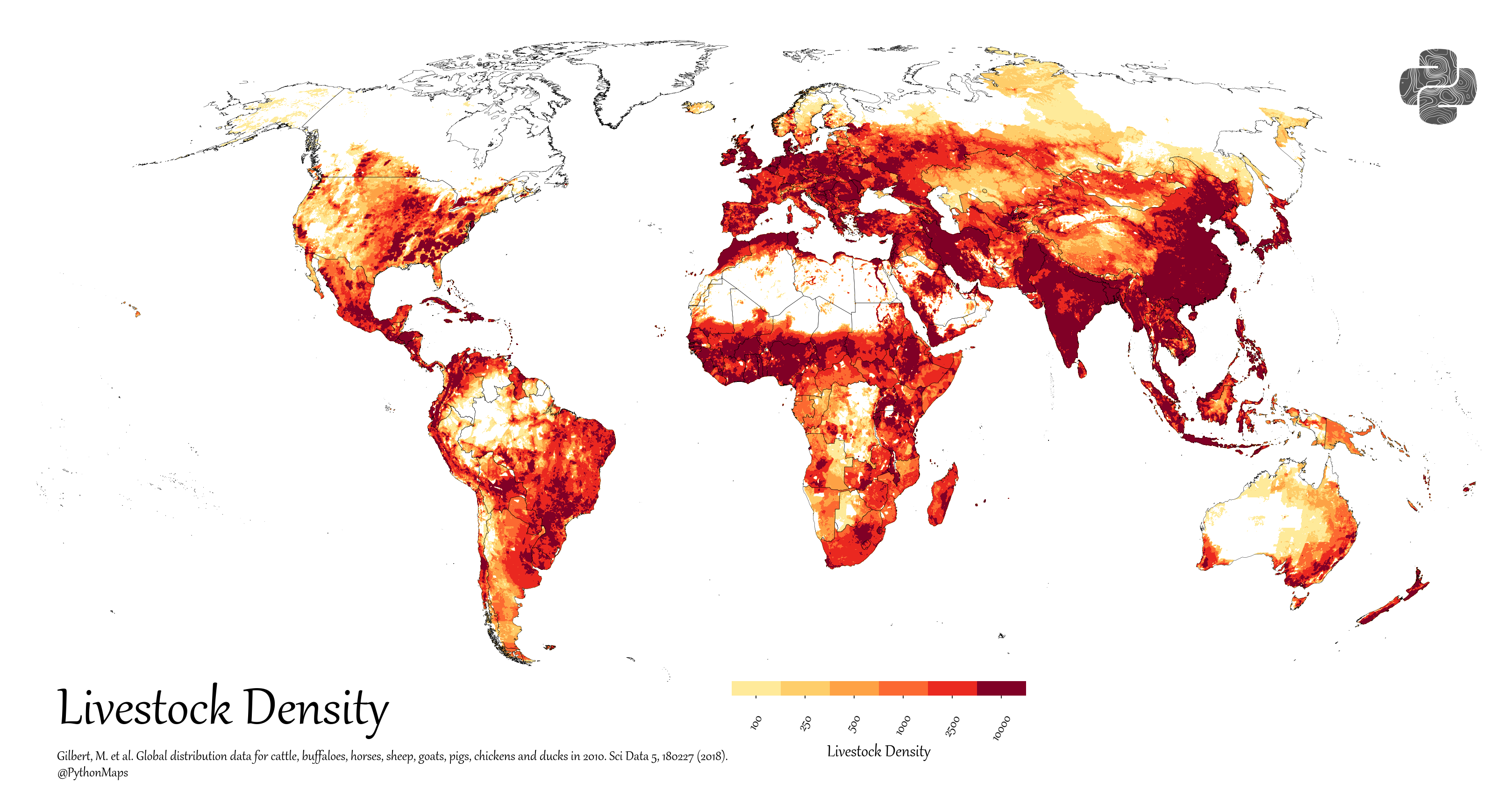Countries by Population Density
This post may contain affiliate links. As an Amazon Associate, we earn from qualifying purchases.
Have you ever wondered how people are spread out across our planet? Population density, the measure of people living in a given area, offers a fascinating glimpse into human settlement patterns worldwide. As of 2021, with a global population of about 7.9 billion and Earth’s total land area of 510 million km² (197 million sq. mi.), the average global population density stands at roughly 15.5 people per km² (40 per sq. mi.).
However, this global average masks the incredible diversity in how people are distributed across different countries and regions. Let’s take a closer look at this captivating aspect of our world’s geography.
The map below shows national divisions of countries by population density.

This world map illustrates the striking variations in population density across different nations. The darker shades represent higher population densities, while lighter areas indicate lower densities.
Crowded Corners and Open Spaces: Extremes in Population Density
At one end of the spectrum, we find some of the world’s most densely populated countries:
- Monaco: This tiny principality boasts an astounding 26,150 people per km² (67,700 per sq. mi.).
- Singapore: The island city-state has a density of 8,358 people per km² (21,650 per sq. mi.).
- Vatican City: The world’s smallest independent state packs in 1,820 people per km² (4,700 per sq. mi.).
On the opposite end, we encounter vast landscapes with sparse human presence:
- Greenland: With just 0.026 people per km² (0.068 per sq. mi.), it’s the least densely populated country [2].
- Mongolia: This expansive nation has only 2 people per km² (5.2 per sq. mi.) [2].
- Australia: The Land Down Under averages 3 people per km² (7.8 per sq. mi.) [2].
Visualizing Population Density: A Cartogram Approach
To better understand these dramatic differences, let’s look at a cartogram that distorts country sizes based on their population density:

In this visualization, densely populated countries appear larger than their geographic size, while sparsely populated nations shrink. Notice how small countries like Singapore and Bahrain balloon in size, while vast territories like Russia and Canada become much smaller.
The Dynamic Nature of Population Density
Population density isn’t static; it changes over time because of factors like birth rates, migration, and urbanization. The following animation shows how population density evolved from 2000 to 2016:

This time-lapse reveals interesting trends, such as the rapid increase in density in parts of Africa and Asia, while some developed countries show more stable patterns.
Factors Influencing Population Density
Several factors contribute to these patterns:
- Geography: Climate, terrain, and natural resources play crucial roles in where people settle.
- History: Past migration patterns, colonization, and political boundaries shape current distributions.
- Economics: Job opportunities and economic development attract people to certain areas.
- Technology: Advancements in agriculture and infrastructure allow higher densities in previously uninhabitable regions.
Understanding population density helps us grasp the complex interplay between humans and their environment. It influences everything from urban planning and resource management to cultural diversity and economic development.
As our global population continues to grow and shift, keeping an eye on these patterns will be crucial for addressing future challenges and opportunities in our interconnected world.
For those interested in exploring world geography further, here are some excellent world maps available on Amazon:








